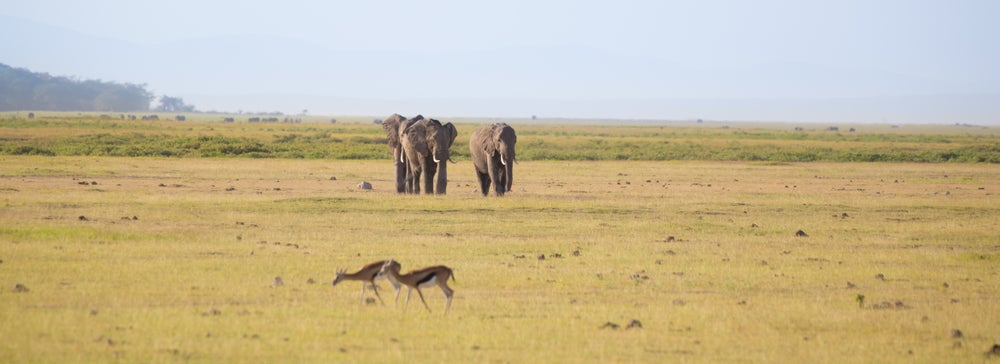The great corporation (the elephant) continues to run by rigid structures; on the other hand, the startup (the gazelle) has a high tolerance for risk.
Grow Your Business,
Not Your Inbox
Stay informed and join our daily newsletter now!
May
20, 2021
6 min read
Opinions expressed by Entrepreneur contributors are their own.

By Edwin Andrés Casallas Larrotta, Head of Business Development Colombia & Ecuador Wayra Hispanoamérica
At the end of the 70s and 80s, the simile of gazelles and elephants , used by professors Birch of the Massachusetts Institute of Technology and Belasco of the University of San Diego in their academic articles on entrepreneurship was the easiest way to express reality. of the business world of the time. Incredibly, after four decades this comparison is still valid. At present, the large corporation (the elephant) continues to be managed by rigid structures, mostly hierarchical, as well as by bureaucratic processes that make it slow to change; On the other hand, the startup (the gazelle) presents an agile structure and processes that, together with its high tolerance to risk, make it light and minimize its growth and scaling times. Likewise, Belasco reaffirms the need to keep alive the spirit of innovation in large companies, as pointed out in his book Teaching the elephant to dance .
For his part, Iñaki Ortega expresses in the following fable the reality that for many years marked the relationship between large and small companies: “A young elephant that lived in the savannah observed daily with admiration the agility with which the light gazelle dodged obstacles and even attacks from the dreaded lions. The acrobatic leaps of the gazelle resembled the steps of a ballroom dance enlivened by Chopin chords. The pachyderm decided to spend several weeks practicing turns and dance steps until one morning he eagerly proposed to the antelope to dance together. The gazelle hesitated because the five thousand kilos of her friend compared to his only fifty were too much difference, but the enthusiasm of the young elephant finally convinced her. The two animals began to dance as if it were a waltz, and in the first turn of the dance the elephant’s foot landed by mistake, but with all the force of its five tons of weight, on the fragile column of the gazelle, who was crushed to death on the spot ”.
Previously, companies used to take advantage of and sometimes eat up startups . Hence the call for elephants and gazelles to learn to dance without stepping on each other, referring to the fact that they must learn to cooperate in order to survive in a difficult and changing environment, today known as the VUCA environment , for its acronym in English ( Volatilily, Uncertainty, Complexity). and Ambiguity ).

At present, the great corporation (the elephant) continues slow to change; on the other hand, the startup (the gazelle) minimize their growth and scaling times / Image: Depositphotos.com
A clear example of the VUCA environment has been the pandemic generated by COVID-19 (SARS-CoV-2) , reflecting the volatility in the radical changes that have occurred in a very short time. The pandemic forced people and companies to use technology, becoming an accelerator of digital transformation by decreasing to approximately 5 years months, time that, under other conditions, digitization would have taken in Latin American companies. One of the fastest growing sectors in 2020 was e-commerce , an area in which Latin America was the second best performing region in the world, only surpassed by Western Asia.
2021 is not far behind, as shown in the most recent PayU report, which highlights a double-digit growth in total annual consumer spending in Latin America, surpassing other regions and making it the new world power of commerce electronic.
The pandemic has been a challenge for everyone, both gazelles and elephants have had to adapt their business models and even their own products or services to the new reality, thus reflecting the natural adaptability that animals have, and without which they would be destined for extinction, as has happened to thousands and thousands of companies and small businesses in the world, which failed to survive in this hostile environment where now the elephant is no longer so strong and the gazelle is no longer so fragile. Just to be an order of magnitude, according to ECLAC figures in 2020, about 2.7 million formal companies in Latin America closed due to the pandemic.
The collaboration for fragile but fast gazelles and strong but slow elephants could come from hippos, animals that, although aggressive, have shown to be collaborators and feel empathy for other species different from their own, saving gazelles on many occasions from the attacks of the crocodile, and sharing and even warning elephants of danger when they want to cross the river. In this new simile, the hippos represent support entities such as accelerators, company builders , CVCs ( Corporate Venture Capital ) and Venture Capital funds that seek to be the communication bridge and the mediating body between companies and startups ; Just as Wayra does, the corporate investment arm of Telefónica Movistar, whose most important task is to achieve the fit between Movistar and startups , supporting both the digital transformation processes of the corporation and that of its clients in the B2B portfolios and B2C.






